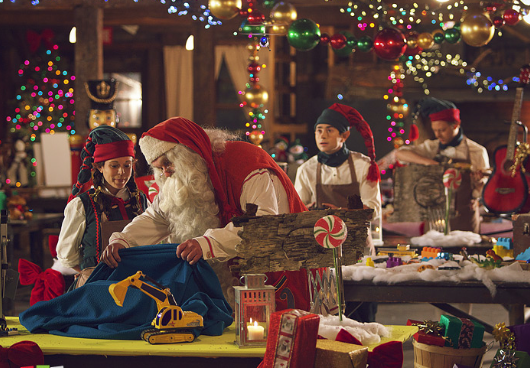The day of Saint Nicholas in Hungary
The figure of the man giving presents in a red cloak, mitre with a crook originates from Catholic regions. He is Saint Nicholas, the folkish figure of the bishop of Myra. He is the patron saint of – among others – children and students, which is why he is considered as the model of today’s gift-giving Santa Claus. He had a reputation for secret gift-giving, such as putting coins in the shoes of those who left them out for him, a practice celebrated on his feast day, which falls on the 6th of December in Hungary.
 Saint Nicholas is called Mikulás in Hungary. Children clean their boots and put them out in the window on the evening of the 5th of December before they go to sleep. By the next morning they will have something in the boots, depending on whether they were good or bad. Mikulás gives chocolate and various fruits, candies and toys to those children who behaved well during the year, but those who were naughty only get “virgács”. It is a pile of gold-coloured birch twigs wrapped in a piece of red paper, and it symbolises punishment. “Virgács” is given by a “krampusz”, who is a fearful and devilish creature, a mean elf, mostly represented with horns and long fur.
Saint Nicholas is called Mikulás in Hungary. Children clean their boots and put them out in the window on the evening of the 5th of December before they go to sleep. By the next morning they will have something in the boots, depending on whether they were good or bad. Mikulás gives chocolate and various fruits, candies and toys to those children who behaved well during the year, but those who were naughty only get “virgács”. It is a pile of gold-coloured birch twigs wrapped in a piece of red paper, and it symbolises punishment. “Virgács” is given by a “krampusz”, who is a fearful and devilish creature, a mean elf, mostly represented with horns and long fur.
Legend has it that the bishop once threw three purses filled with gold coins into the house of an impoverished nobleman through the window so that his three daughters could marry justly. Many people think that this is why the gifts are put into the window on the 6th of December.
This modern way of celebrating the day of Saint Nicholas is only present in the Hungarian culture since the 20th century. Before that, it was very different. Young men went from house to house with clinking chains and scared children and girls on the streets. “Chained Nicholas” was banned in the 18th century because children were afraid of him punishing them, and of his smoky face. He was a dual a character that gave present to good kids and punished bad kids.
“The day is preceded by gloominess, the cheerful celebration of Christmas is preceded by the white-bearded Mikulás and his demoniacal helper, who only punish and never reward and scare children with horrible brooms and “krampusz” shooting their tongues out.” – an installment from a newspaper from 1865.
The gift-giving, cheerful Mikulás custom started spreading in the cities at the end of the 19th century. His figure is absolutely positive in today’s view and many people don’t even know about the former traditions. The day of Saint Nicholas secularised with time and is not connected to the figure of the saint anymore in some places. While between the two world wars the Mikulás lived in heaven and watched over kids from there with his angel and elf helpers, today’s Mikulás lives in Lapland and his sleigh is guided by reindeers.
So, the traditions have changed throughout different times but one thing is sure: children await Mikulás with utter excitement.
Written by Alexandra Béni
Photo: www.facebook.com/northpolehq
Copy editor: bm
Source: Daily News Hungary
please make a donation here
Hot news
Container transport in Budapest may stop: How will this affect Hungarian economy?
Minister: Hungary will protect its territory by every means possible
Orbán cabinet may double airspace fee: another ticket price increase?
Hungary expanding the list of prohibited designer drugs
Hungarian minister: Ukraine ‘blackmailing’ Hungary and pro-peace states
Cocaine found on a Greek bus at southern border of Hungary





1 Comment
Poo